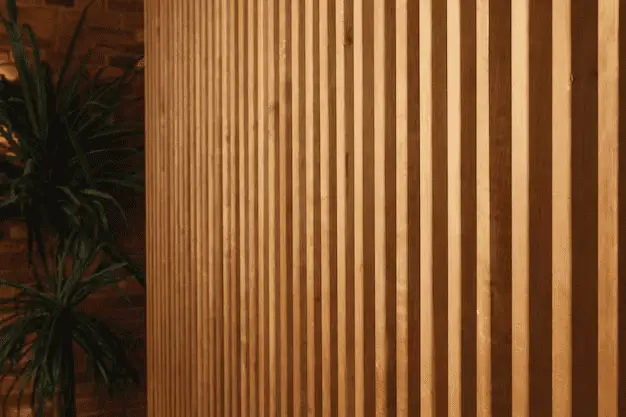Reasons to Opt For Interior Wall Cladding

When it comes to enhancing the aesthetics and functionality of your interior spaces, one often overlooked yet highly effective option is interior cladding. Wall cladding involves covering your interior walls with various materials like wood, metal, stone, or PVC panels. This design choice offers numerous benefits that go beyond mere decoration. In this article, we’ll explore some compelling reasons to opt for interior wall cladding in your home or commercial space.
1. Aesthetic Appeal
One of the most obvious reasons to choose interior wall cladding is the instant boost it gives to your space’s aesthetic appeal. Wall cladding materials come in a wide range of colors, textures, and finishes, allowing you to achieve the desired look and feel for your interior. Whether you prefer a rustic, traditional, modern, or industrial design, there’s a wall cladding option that can bring your vision to life.
2. Durability
Interior wall cladding materials are chosen for their durability and resilience. They can protect your walls from wear and tear, moisture, and damage. For example, wooden wall cladding can protect your walls from scratches and dents, while metal cladding can withstand high-traffic areas without showing signs of wear. This durability ensures that your interior remains in top condition for years to come, reducing maintenance costs.
3. Moisture Resistance
Bathrooms, kitchens, and basements are areas prone to moisture and humidity, which can lead to mold and mildew growth on walls. Interior wall cladding materials like PVC panels and ceramic tiles are highly moisture-resistant, making them an ideal choice for such spaces. By preventing moisture from seeping into the walls, wall cladding helps maintain a healthy indoor environment and prevents costly water damage repairs.
4. Easy Maintenance
Maintaining traditional painted or wallpapered walls can be a time-consuming and costly endeavor. Interior wall cladding, on the other hand, is relatively easy to clean and maintain. Most cladding materials only require periodic wiping with a damp cloth or mild detergent to remove dirt and stains. This not only saves you time but also money on repainting or rewallpapering.
5. Thermal Insulation
Wall cladding can also contribute to improving the energy efficiency of your space. Some cladding materials, like wood, have natural insulating properties that help regulate indoor temperature. This can reduce your heating and cooling costs over time, making your home or office more eco-friendly and budget-friendly.
6. Soundproofing
If you live in a noisy neighborhood or work in a commercial space with a lot of foot traffic, wall cladding can serve as an effective soundproofing solution. Materials like cork, fabric, or acoustic panels can absorb sound and reduce noise levels within your interior. This creates a more peaceful and comfortable environment, particularly in bedrooms, living rooms, or conference rooms.
7. Concealing Imperfections
Walls with imperfections, such as cracks or uneven surfaces, can be a challenge to address with traditional wall treatments. Interior wall cladding, however, can easily conceal these flaws, providing a smooth and flawless appearance. It’s a quick and cost-effective way to transform a less-than-perfect wall into a stunning feature.
8. Design Versatility
Wall cladding offers incredible design versatility. You can use it to create accent walls, cover entire rooms, or even use it on ceilings for a unique look. With the vast array of materials and styles available, you can let your creativity run wild and customize your interior spaces to reflect your personal style and taste.
9. Increase Property Value
Investing in high-quality interior wall cladding can significantly increase the resale value of your property. Potential buyers or tenants are often drawn to homes or commercial spaces that have attractive and low-maintenance interiors. Wall cladding can set your property apart from the competition and make it more appealing in the real estate market.
10. Environmentally Friendly Options
For those who prioritize sustainability, many interior wall cladding materials are available that are eco-friendly. Reclaimed wood, recycled metal, and bamboo are just a few examples of sustainable cladding options that reduce the environmental impact of your interior design choices.
Conclusion
Interior wall cladding is a versatile and practical design choice that can enhance the aesthetics, durability, and functionality of your interior spaces. Whether you’re renovating your home or commercial property, or simply looking to refresh your space, consider the numerous benefits of wall cladding as a cost-effective and stylish solution at Alutech Panels.

